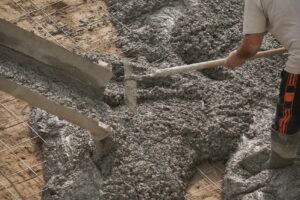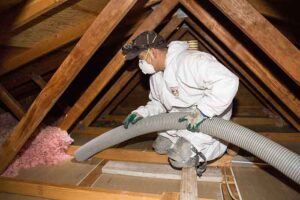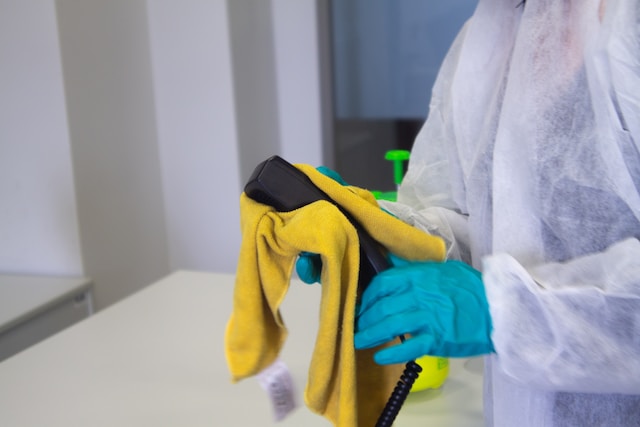Waste produced by humans has risen by more than tenfold in the past century. It is a leading contributor to climate change. Humans can reduce waste production by recycling and cutting down on disposable items.
Where rubbish ends up after being removed from a property depends on how it’s disposed of. It can end up in landfills, incineration plants, or recycling depots. Call a reliable Perth Rubbish Removal service for your rubbish removal needs.

Rubbish Removal Services
A rubbish removal service is a professional solution for clearing and disposing of unwanted items and waste. They can provide dumpsters that are placed on-site for you to load up with trash and junk. The company will then haul the dumpster away when it is full, saving you time and effort. They can also provide recycling services, allowing you to recycle your unwanted items and reuse them in the future.
Rubbish removal companies can handle a wide variety of waste, including hazardous materials. They will ensure that your waste is disposed of by local laws and regulations. They may also offer flexible rubbish pickup schedules. They can even help you with special disposal needs, such as electronic waste or construction debris.
After rubbish removal is complete, it will be sent to one of three places: landfills, incineration plants, or recycling depots. The latter is the most environmentally friendly option. The other two options can have negative effects on the environment, so it is important to choose a rubbish removal service that offers environmental protection.
Rubbish Removal Companies
Rubbish removal companies provide a convenient and cost-effective way to dispose of junk. They offer different-sized dumpsters that can be dropped off at a customer’s home or business. The customer then loads the dumpster with junk and other items, and when it is full, the rubbish removal company picks up the dumpster and hauls it away. This service is ideal for homeowners and businesses that need to clear out a lot of items at once.
Junk removal companies have the equipment and expertise to deal with a wide range of waste materials. They can handle everything from old appliances to furniture, and even hazardous waste materials. They also can sort through junk to separate recyclable and non-recyclable materials. This ensures that the proper materials are disposed of by local regulations. This helps to reduce the risk of health hazards for people and the environment.
When choosing a rubbish removal company, make sure it is licensed and insured. This will protect you in the event of an accident or damage to your property. In addition, they should be reliable and professional in their work. Lastly, they should offer a flexible schedule that works for your busy life.
It is important to hire a reputable rubbish removal company because they will save you time and money. They have the tools and knowledge to remove all kinds of unwanted garbage from your property, including construction debris, office waste, and yard waste. They will also dispose of your electronic waste and hazardous materials according to local regulations. This is important because improper disposal of rubbish can have devastating consequences for the environment and human health.
Finding a rubbish removal company near you is easy by searching on the internet. You can narrow down your search by location or zip code. You can also read reviews and testimonials to find the best rubbish removal company for your needs. Then, simply call the company to arrange a pickup.
Skip Bin Hire
Skip bin hire is a service that provides a large bin for you to store your waste temporarily. This can be useful for a wide variety of reasons, including home renovations, cleaning up after a big event, or simply moving house. However, hiring a skip bin should always be done with a reputable company that is registered with the local council. Then, you can be sure that the rubbish will be disposed of properly and legally.
The price of a skip bin is usually based on the size. This can make it cheaper than hiring a garbage truck to take away your waste. It is also important to choose a bin type that suits the type of waste you are disposing of. For example, green or organic waste should go in a separate bin from other types of trash. This will help prevent the landfills from filling up with unnecessary rubbish and waste.
It is also a good idea to compare prices between different companies. Some may advertise a skip bin as being a certain size, only to surprise you with a smaller one when they arrive at your property. These bait-and-switch tactics can cost you time and money. You should always check the size of the bin and its cost before signing a contract.
If you’re dealing with a big rubbish removal job, skip bin hire is an excellent option for reducing the amount of waste your project produces. These large bins can be rented on short or long-term terms to make waste disposal more convenient. These services can even be used for construction sites and other businesses that produce a lot of waste.
Another advantage of rubbish removal is that they can handle a wider range of waste materials than your local council. For instance, they can recycle and dispose of electronics, metals, and wood. They can also deal with hazardous materials such as paint and chemicals. These services can also be used to clean up the aftermath of an estate sale or demolition. They can also help you with organizing and sorting waste so that it can be easily recycled or stored in the right place.
Rubbish removal services play a crucial role in maintaining cleanliness, safety, and environmental sustainability in residential, commercial, and industrial settings. Whether it’s clearing out household clutter, disposing of construction debris, or managing waste from large-scale events, rubbish removal services offer a convenient and efficient solution for handling unwanted items and materials. This article will explore the importance of rubbish removal services, the types of waste they handle, and the benefits they provide to individuals and communities.
First and foremost, rubbish removal services are essential for maintaining clean and hygienic living and working environments. Accumulated rubbish can pose health hazards, attract pests, and create an unsightly and unpleasant atmosphere. By promptly removing waste and unwanted items, rubbish removal services help to mitigate these issues, ensuring that homes, businesses, and public spaces remain clean, safe, and welcoming. This is particularly important in urban areas, where population density and limited space can exacerbate the impact of accumulated rubbish on the local environment.
Rubbish removal services also play a critical role in managing waste in an environmentally responsible manner. Professional rubbish removal companies are well-equipped to handle various types of waste, including household junk, green waste, construction debris, and hazardous materials. They have the knowledge and resources to ensure that different types of waste are properly sorted, recycled, or disposed of according to local regulations and environmental best practices. This helps to reduce the amount of waste sent to landfills, minimize pollution, and conserve natural resources, contributing to overall sustainability efforts.
The types of waste handled by rubbish removal services are diverse and can include everyday household items such as furniture, appliances, electronics, and general clutter. Additionally, these services are equipped to handle green waste, including yard trimmings, branches, and other organic materials. Construction and renovation projects generate substantial amounts of debris, such as concrete, wood, drywall, and other building materials, which require efficient removal and disposal. Hazardous waste, such as chemicals, paints, and solvents, also demands specialized handling to ensure compliance with safety and environmental regulations.
The benefits of utilizing rubbish removal services are numerous. For individuals and businesses, these services offer convenience and efficiency, saving time and effort by providing a comprehensive solution for waste removal. Instead of dealing with the logistics of transporting and disposing of waste, customers can rely on professional rubbish removal companies to handle the entire process, from collection to disposal. This allows them to focus on other priorities while ensuring that waste is managed responsibly and by local regulations.
From a community perspective, rubbish removal services contribute to the overall cleanliness and aesthetics of neighborhoods and public spaces. By promptly removing waste and unwanted items, these services help to maintain a positive and inviting environment for residents, visitors, and local businesses. Clean and well-maintained surroundings can enhance quality of life, foster community pride, and even have a positive impact on property values.
Furthermore, the environmental benefits of rubbish removal services are significant. By promoting responsible waste management practices, including recycling and proper disposal of hazardous materials, these services contribute to the conservation of natural resources and the reduction of pollution. This aligns with broader sustainability goals and supports efforts to minimize the environmental impact of waste generation and disposal.
In conclusion, rubbish removal services are essential for maintaining cleanliness, safety, and environmental sustainability in residential, commercial, and industrial settings. These services offer a convenient and efficient solution for handling a wide range of waste, from household clutter to construction debris, while ensuring that waste is managed responsibly and by local regulations. By utilizing rubbish removal services, individuals and communities can benefit from cleaner, safer environments, reduced environmental impact, and overall convenience and efficiency in waste management.







